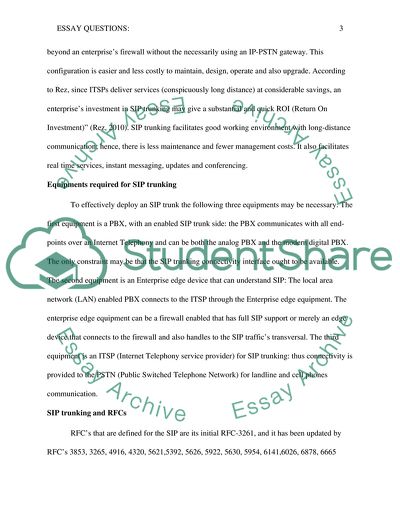Cite this document
(Session Initiation Protocol Essay Example | Topics and Well Written Essays - 3000 words - 2, n.d.)
Session Initiation Protocol Essay Example | Topics and Well Written Essays - 3000 words - 2. https://studentshare.org/information-technology/1846253-essay-questions
Session Initiation Protocol Essay Example | Topics and Well Written Essays - 3000 words - 2. https://studentshare.org/information-technology/1846253-essay-questions
(Session Initiation Protocol Essay Example | Topics and Well Written Essays - 3000 Words - 2)
Session Initiation Protocol Essay Example | Topics and Well Written Essays - 3000 Words - 2. https://studentshare.org/information-technology/1846253-essay-questions.
Session Initiation Protocol Essay Example | Topics and Well Written Essays - 3000 Words - 2. https://studentshare.org/information-technology/1846253-essay-questions.
“Session Initiation Protocol Essay Example | Topics and Well Written Essays - 3000 Words - 2”. https://studentshare.org/information-technology/1846253-essay-questions.


